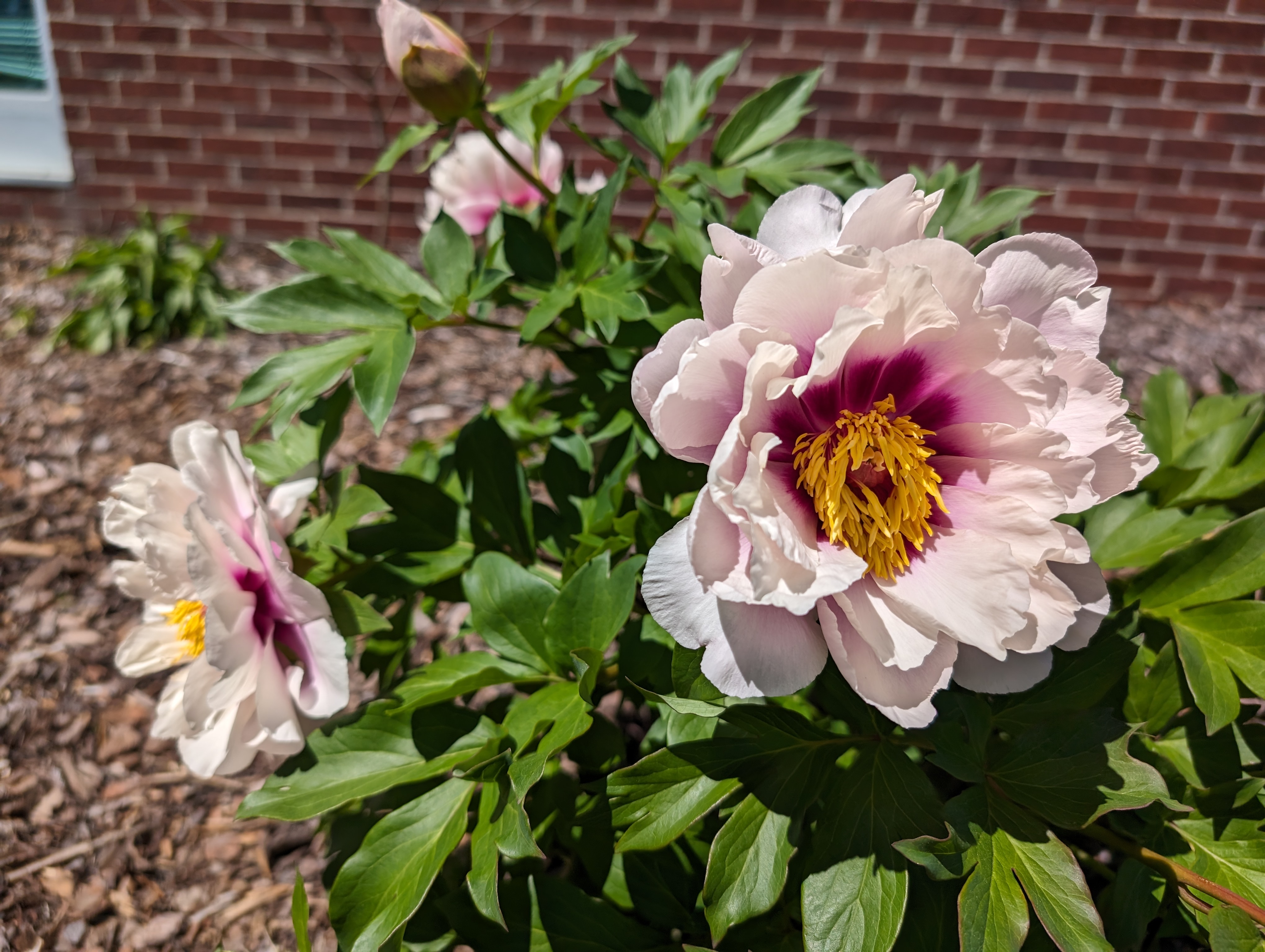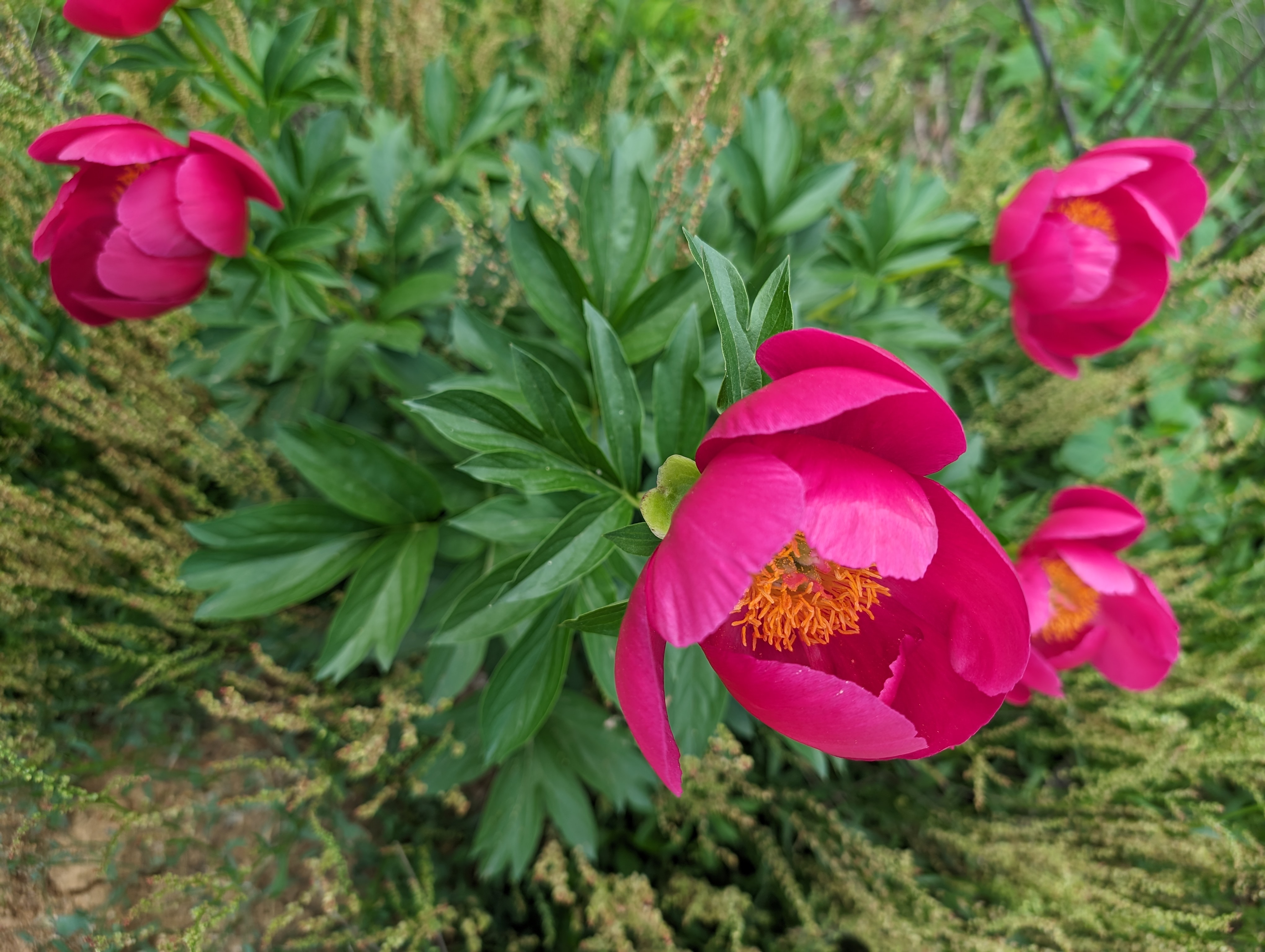Plant Your Peonies in the Fall and Other Southern Peony Tips
go.ncsu.edu/readext?1003274
en Español / em Português
El inglés es el idioma de control de esta página. En la medida en que haya algún conflicto entre la traducción al inglés y la traducción, el inglés prevalece.
Al hacer clic en el enlace de traducción se activa un servicio de traducción gratuito para convertir la página al español. Al igual que con cualquier traducción por Internet, la conversión no es sensible al contexto y puede que no traduzca el texto en su significado original. NC State Extension no garantiza la exactitud del texto traducido. Por favor, tenga en cuenta que algunas aplicaciones y/o servicios pueden no funcionar como se espera cuando se traducen.
Português
Inglês é o idioma de controle desta página. Na medida que haja algum conflito entre o texto original em Inglês e a tradução, o Inglês prevalece.
Ao clicar no link de tradução, um serviço gratuito de tradução será ativado para converter a página para o Português. Como em qualquer tradução pela internet, a conversão não é sensivel ao contexto e pode não ocorrer a tradução para o significado orginal. O serviço de Extensão da Carolina do Norte (NC State Extension) não garante a exatidão do texto traduzido. Por favor, observe que algumas funções ou serviços podem não funcionar como esperado após a tradução.
English
English is the controlling language of this page. To the extent there is any conflict between the English text and the translation, English controls.
Clicking on the translation link activates a free translation service to convert the page to Spanish. As with any Internet translation, the conversion is not context-sensitive and may not translate the text to its original meaning. NC State Extension does not guarantee the accuracy of the translated text. Please note that some applications and/or services may not function as expected when translated.
Collapse ▲Peonies are some of the most spectacular plants in the Southern Garden in April and May. Nothing draws a crowd and steals the show. We love using them in arrangements in the late spring at the Extension office because they can immediately start a conversation about gardening and maintenance. Despite their delicate floral facade, peonies are incredibly hardy, long-lived herbaceous plants. When you know how to treat them!
TOP TIP: DON’T Plant Them in the Ground While They’re Growing
I get it: You go down to the local garden center in April and May. You see the stunning peony blooms. You disregard the price tag. You take it home. You want to plant it. DON’T!
Peonies do not like having their roots disturbed while they are actively growing and will be stunted if rushed into the landscape going into our actively hot and humid period of the Southern Summer. Be patient. Keep the pot it came in watered and fertilized over the summer.
If you’ve purchased one out of a bag at the local garden center, I would also recommend keeping it in a pot over the summer. Beware of these though! The bags are usually opaque and you cannot verify if the root plate and roots you are getting are healthy! These can be prone to drying out and getting fungal diseases. Best to dip the plant in a 1 gallon water:2 TBSP bleach solution for five minutes, rinse, and then let them soak in clean water for about 10 minutes to rehydrate them. Pot into well-draining perennial or tree-related potting media for the summer.
Other Top Care Tips for Peonies
Peonies prefer full sun to light shade in the garden, and do not like wet feet. Make sure the soil is moist but well-drained, and rich. Peonies are heavy feeders and their bloom show will tell you if they are not getting enough nutrition! Fertilize when you see the foliage break from the ground in the late winter, making sure not to get the fertilizer on the foliage. Peonies are quite drought tolerant, but they will appreciate being watered if we go through a dry spell during the blooming season.
see the foliage break from the ground in the late winter, making sure not to get the fertilizer on the foliage. Peonies are quite drought tolerant, but they will appreciate being watered if we go through a dry spell during the blooming season.
Peonies are also great cut flowers, if only for a few days! When the buds are just starting to open where you can see the petals, cut the stems off about 4-5 buds below a blossom and place them in water with a nutritive solution in it. Within two to three days the flowers will open and last for another 3-5 days! Some peonies are fragrant, as well, and this can permeate inside!
We are so used to “protecting” our plants from the cold, but we can rest easy with our peonies. Since peonies like cold weather, it is important to plant the crowns so the root plate and buds are at the soil surface. Do NOT mulch over these crowns in the wintertime, or only apply about an inch of mulch. You can mulch around the crowns, just not over the exposed teardrop shaped buds! Exposing the buds to cold will encourage bloom formation! Don’t cover your peonies if we get a late frost! They can tolerate the cold.
Make sure you understand what kind of peony you have. There are three main types: herbaceous, tree and intersectional peonies. Depending on what type you have, they will need different types of pruning. Herbaceous peonies die back to the ground every year and have no standing stems. Tree peonies will have stems that continue to grow and get taller as they get older. Sometimes these will need light pruning after bud break to remove dead tips from the winter season. The Intersectional peonies will also have above-ground stems that linger over the winter, but they do not continue to grow in height and may need more pruning after the spring bud break to remove dead tips.
continue to grow and get taller as they get older. Sometimes these will need light pruning after bud break to remove dead tips from the winter season. The Intersectional peonies will also have above-ground stems that linger over the winter, but they do not continue to grow in height and may need more pruning after the spring bud break to remove dead tips.
Peonies prefer cooler climates and have become less popular in the South as our climate has changed. Peonies are well-worth the effort to include in our Southern landscapes and, with some basic care concepts and recognition of their preferences, we can make them thriving members of our Southern gardens. There are still plenty of varieties that do just fine in our climate with the right care!
Amanda Wilkins Bratcher is the Horticulture Agent for North Carolina Cooperative Extension in Lee County.




